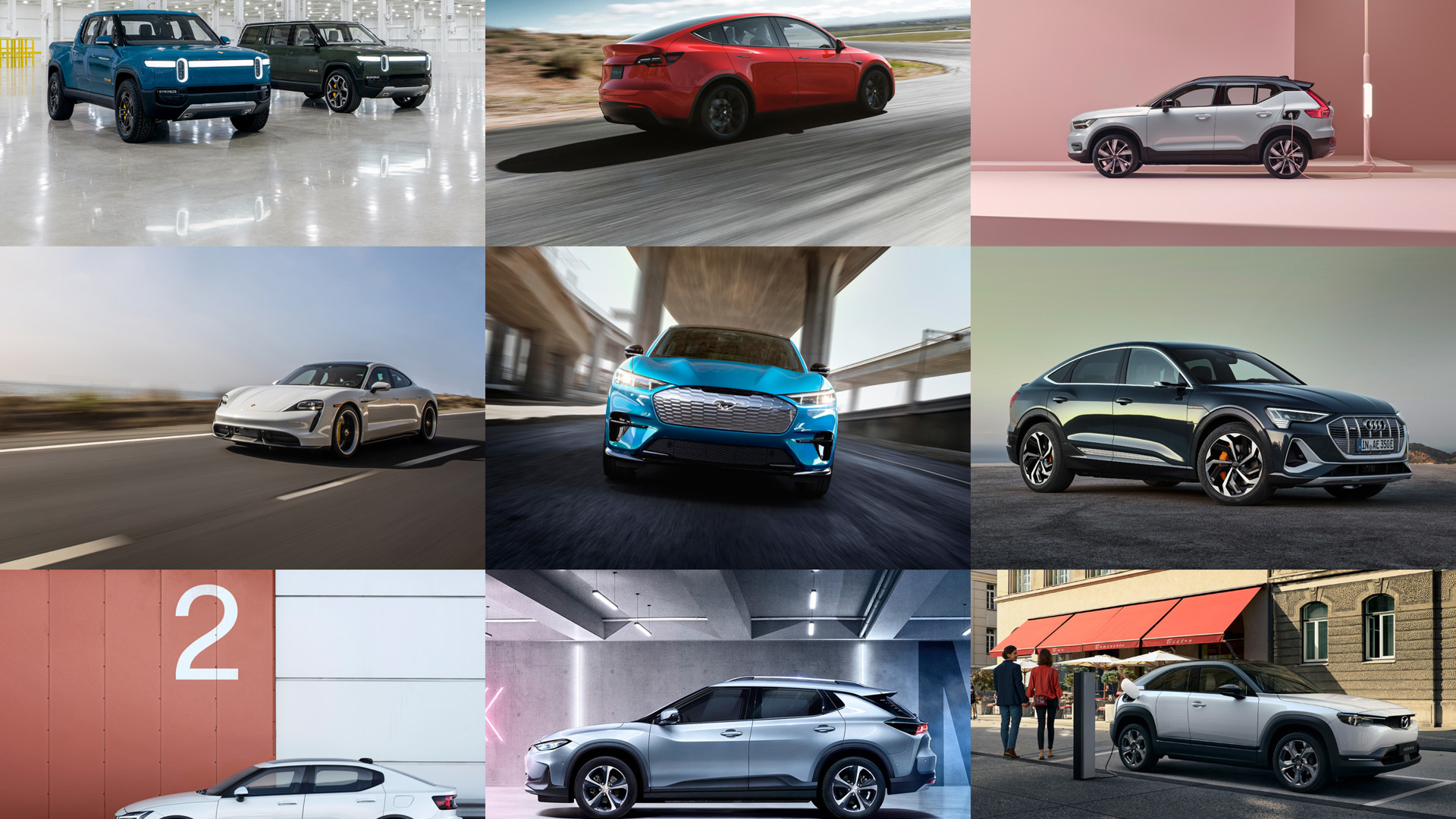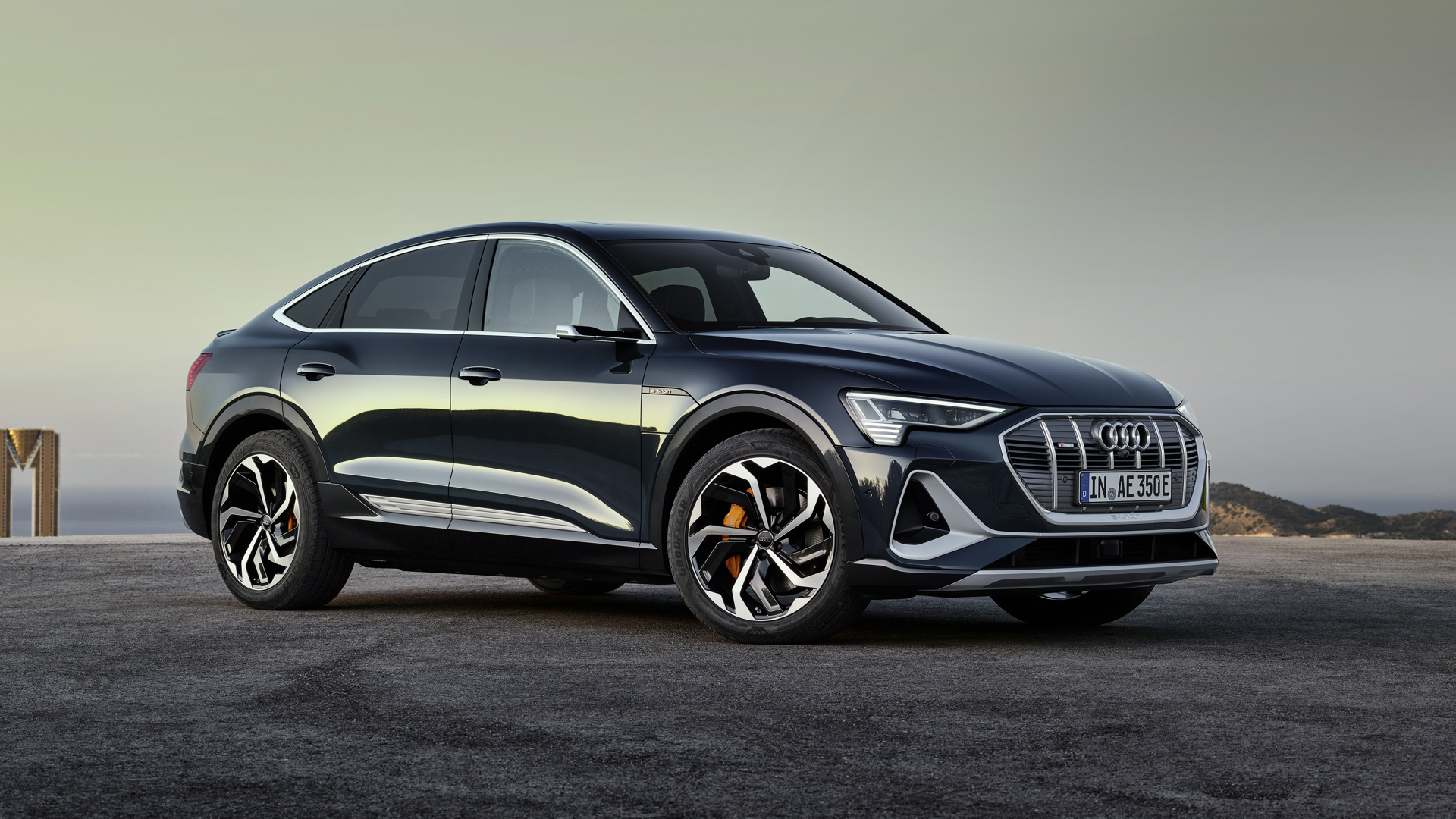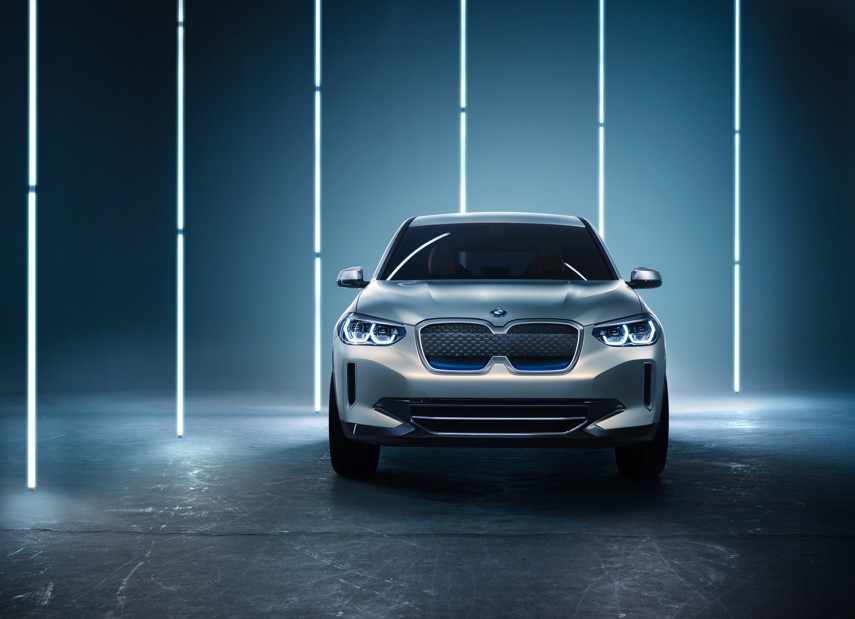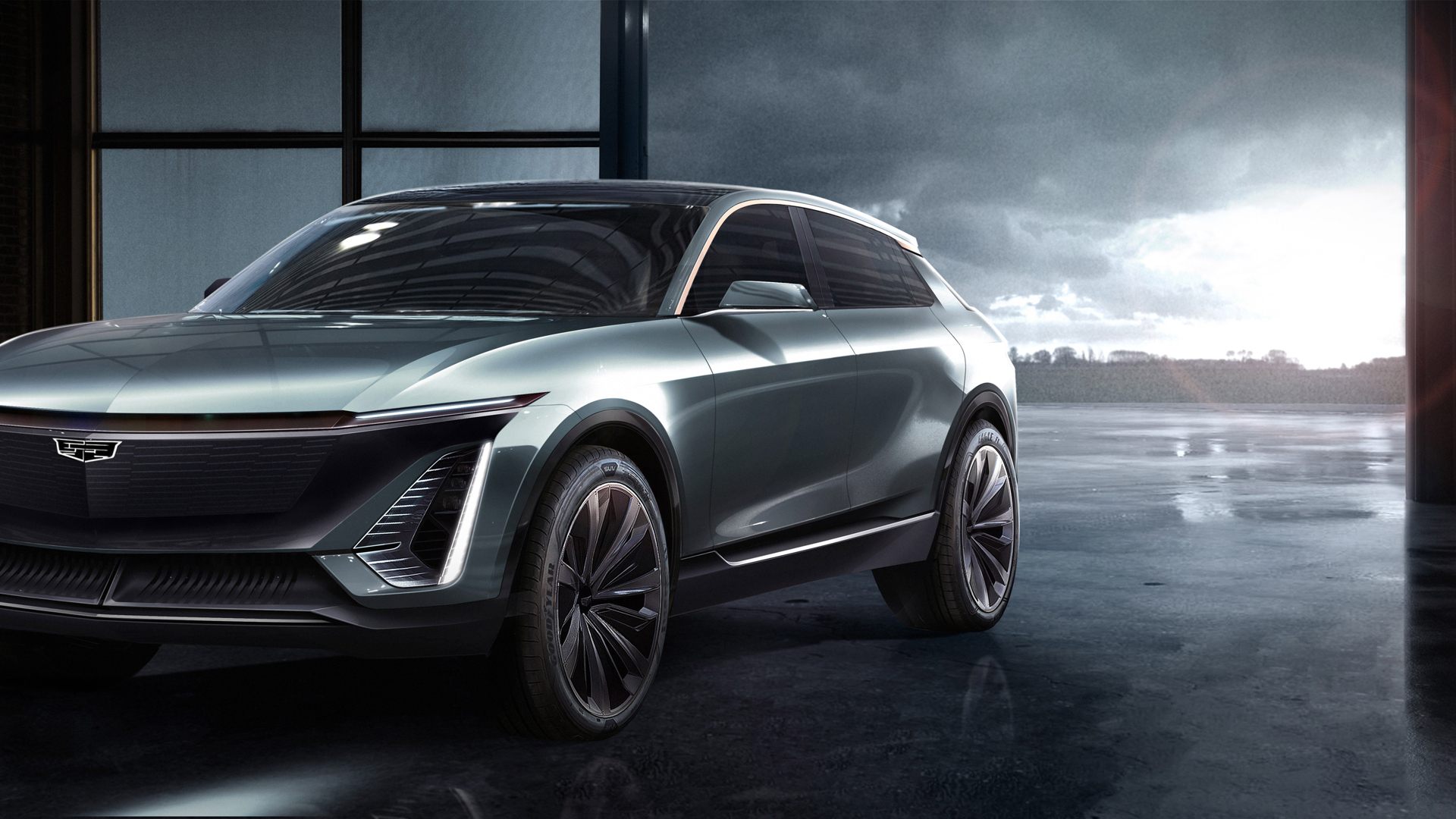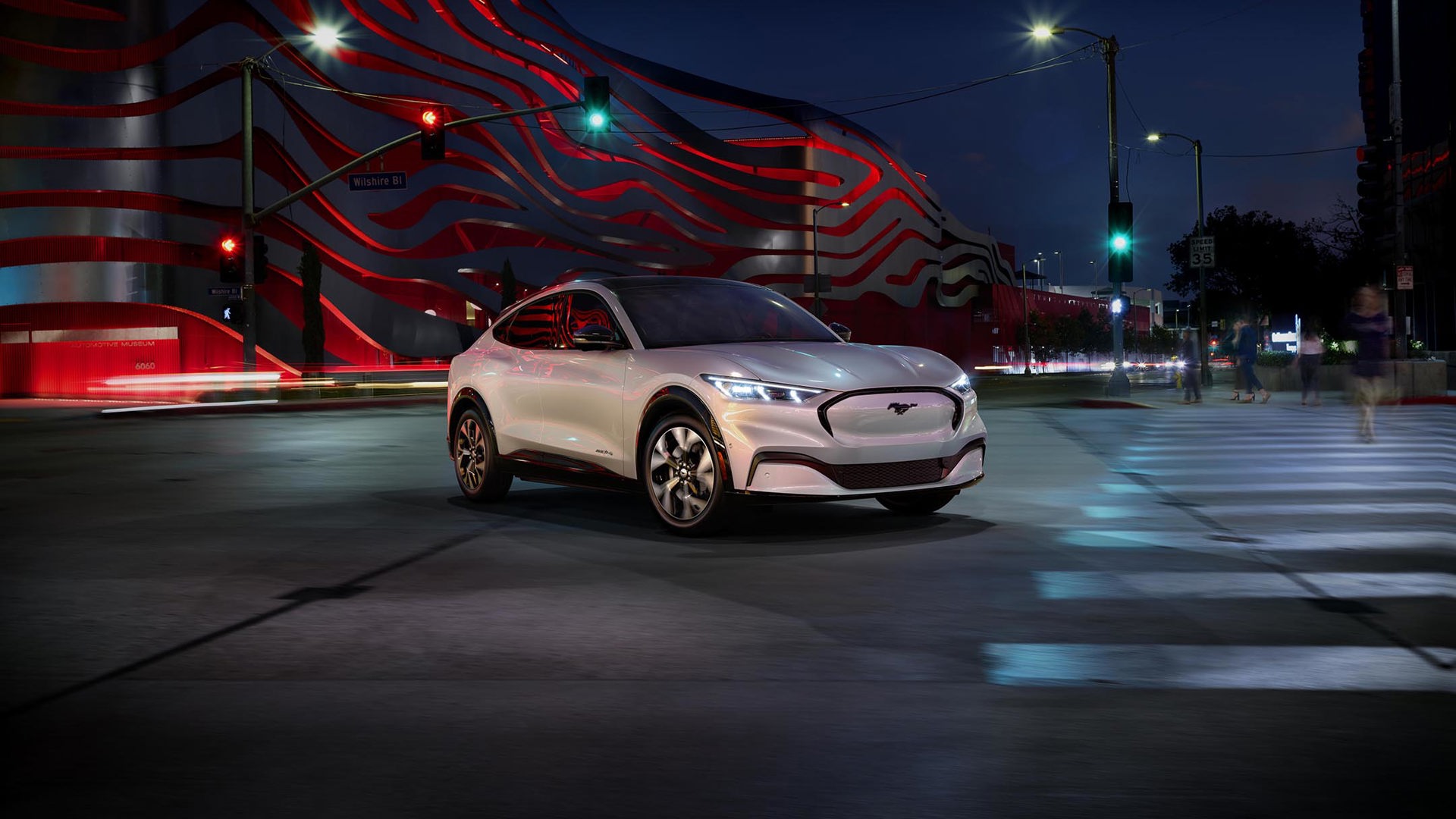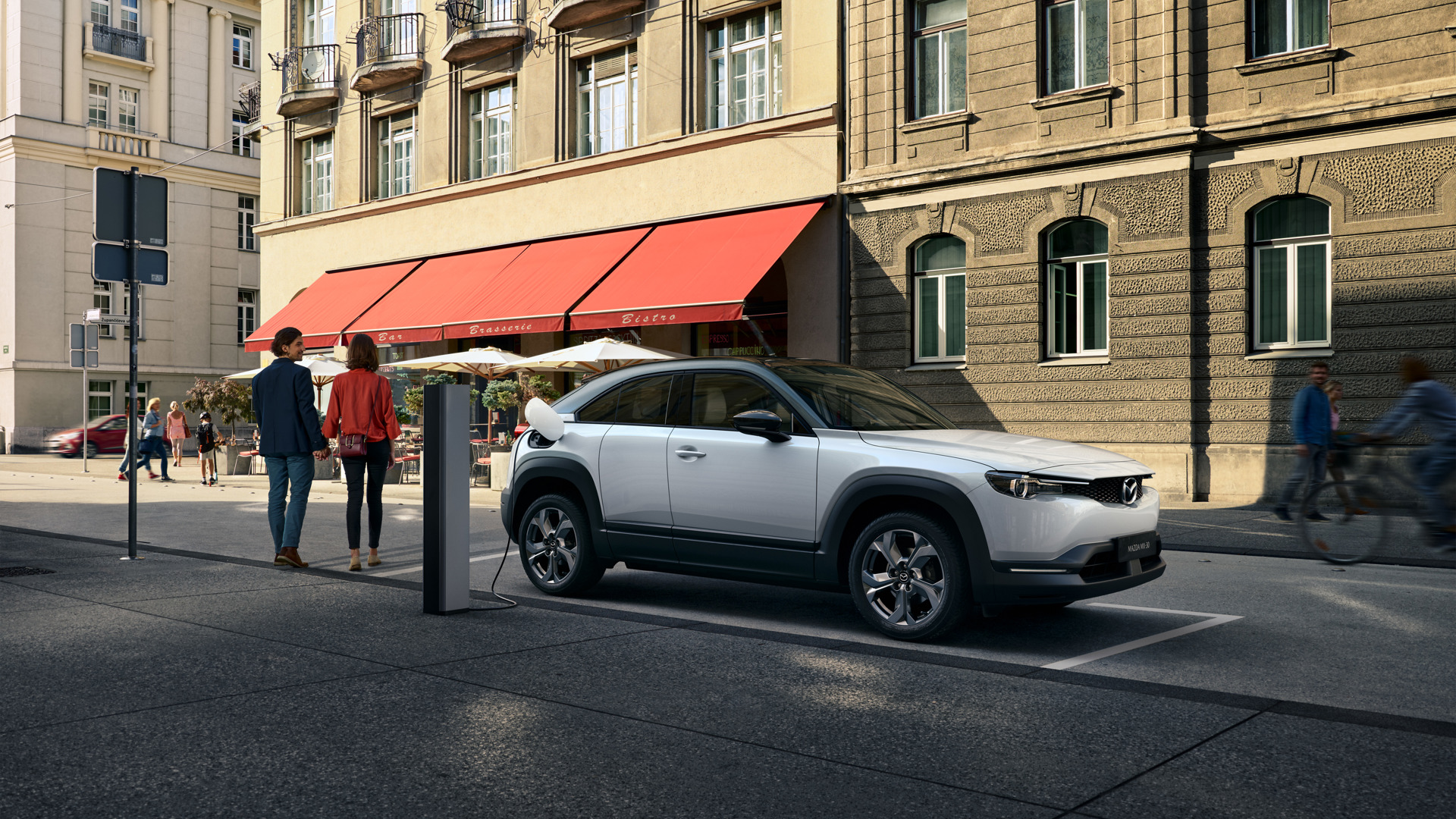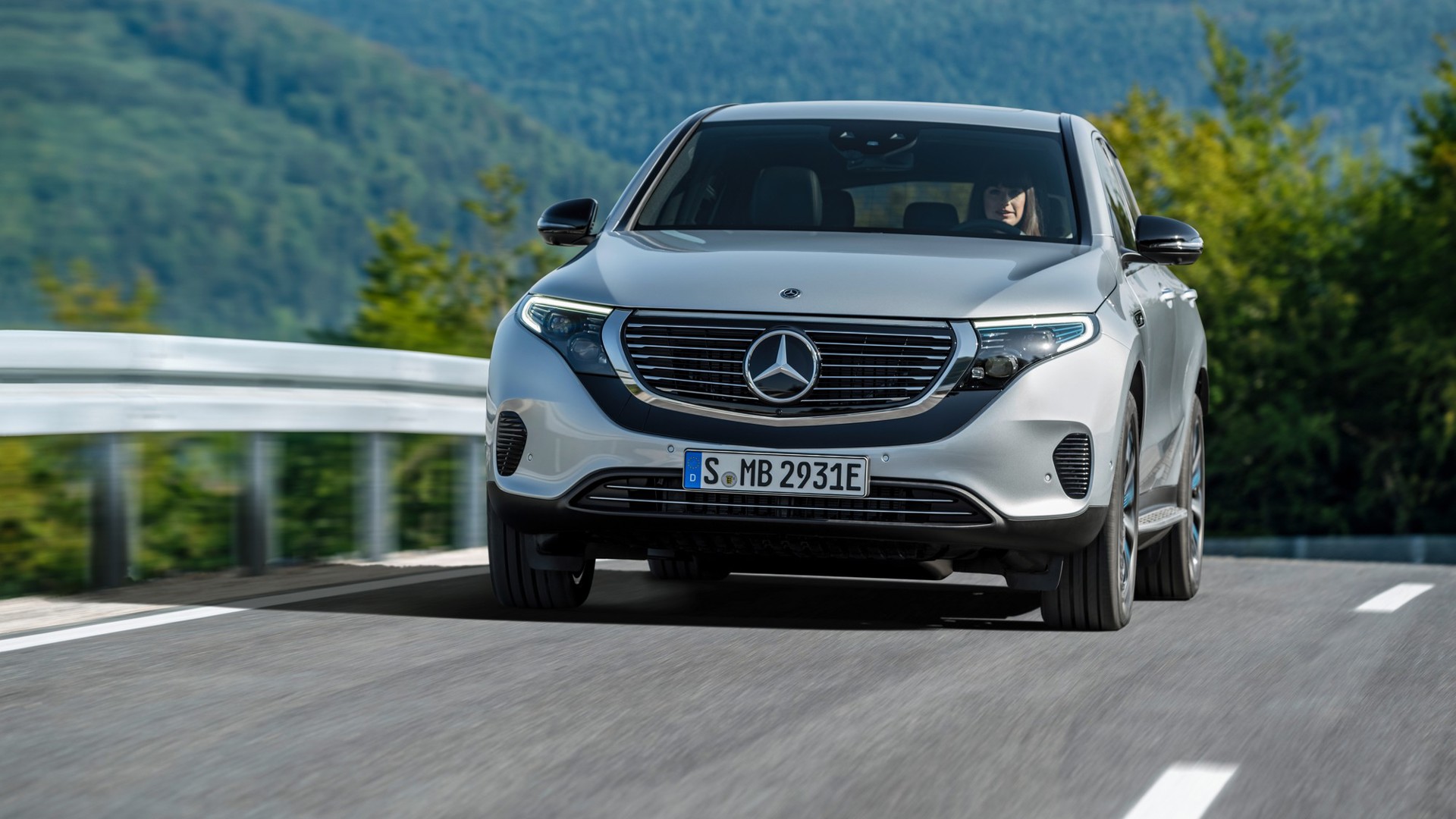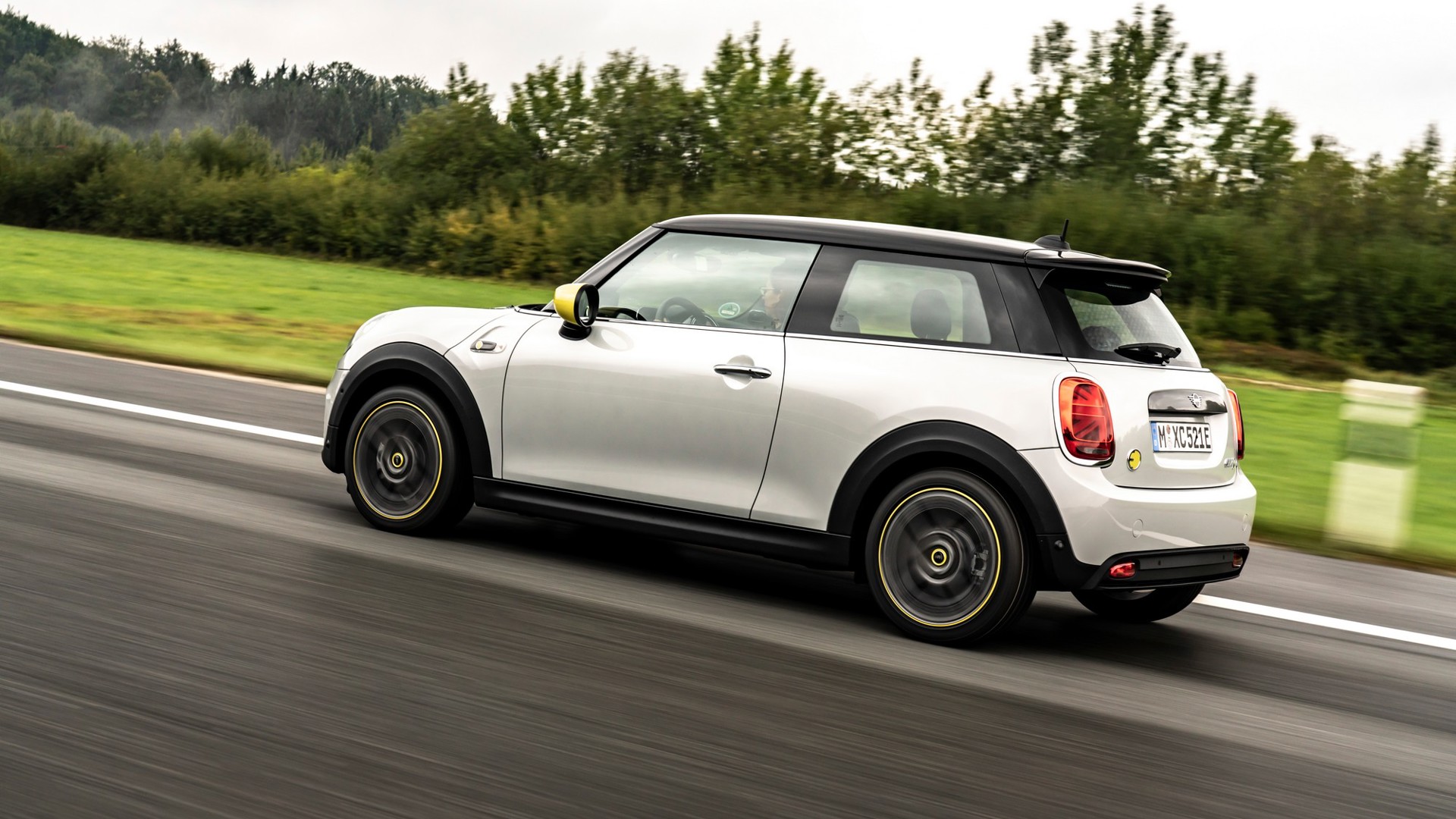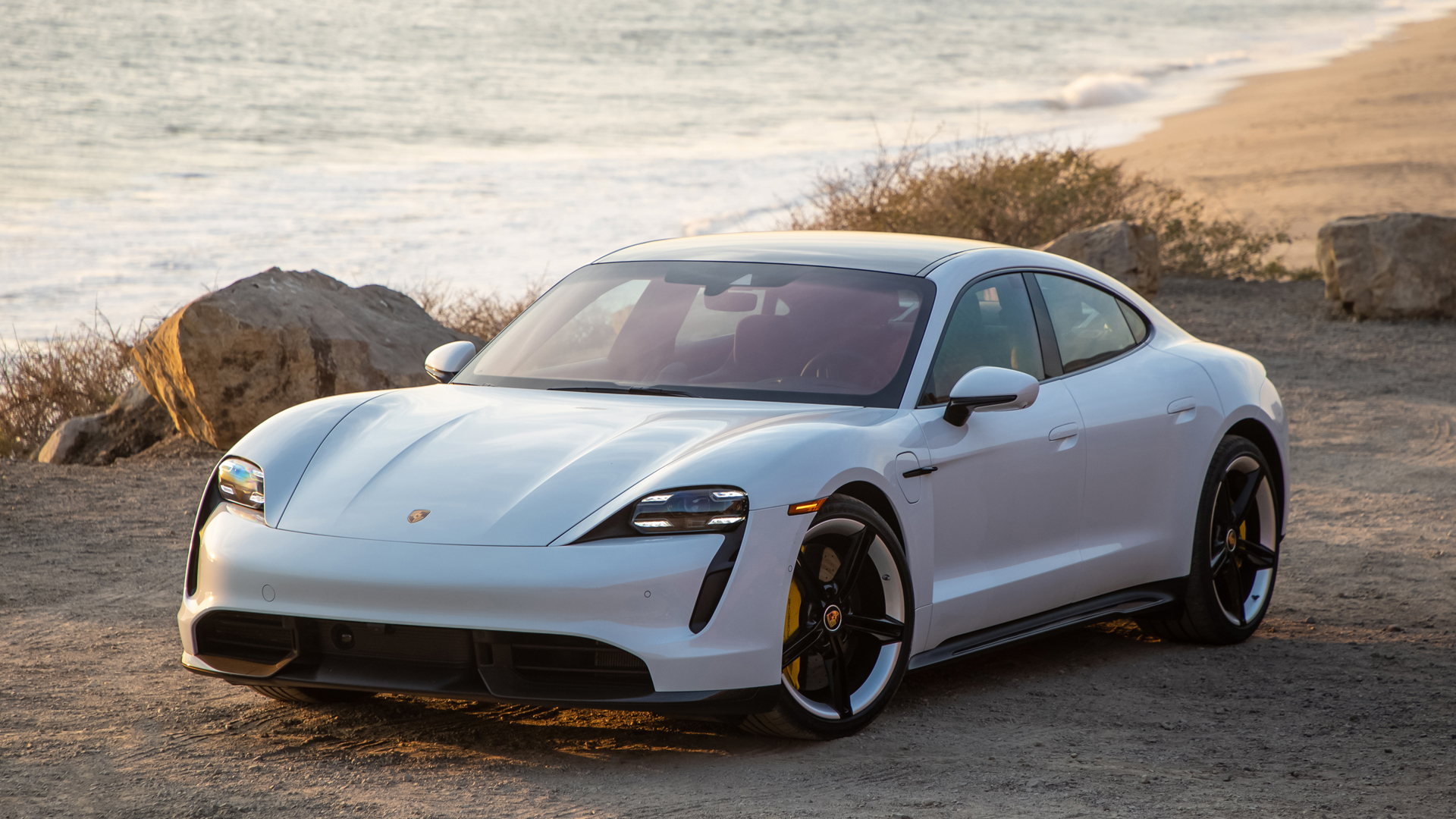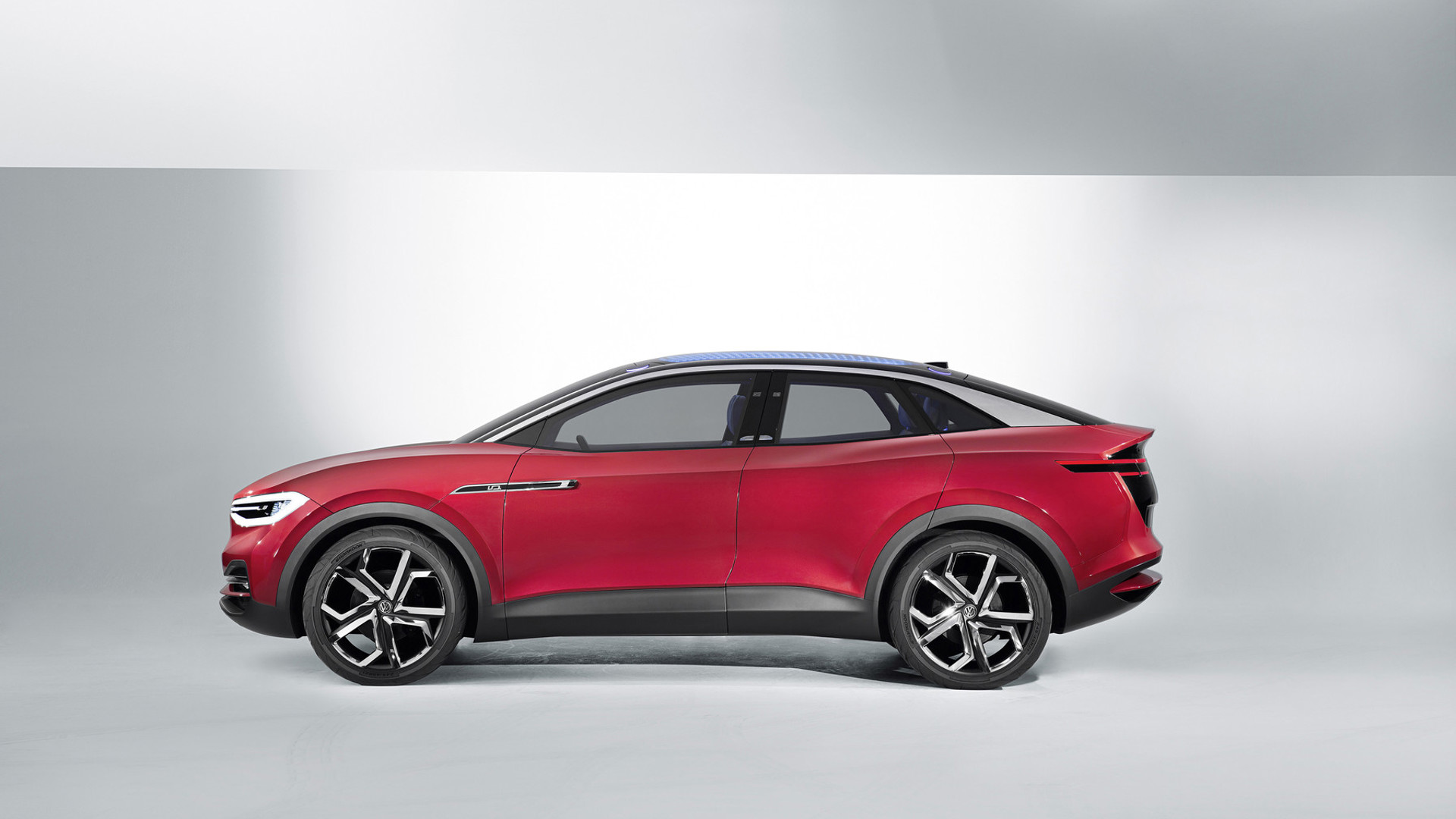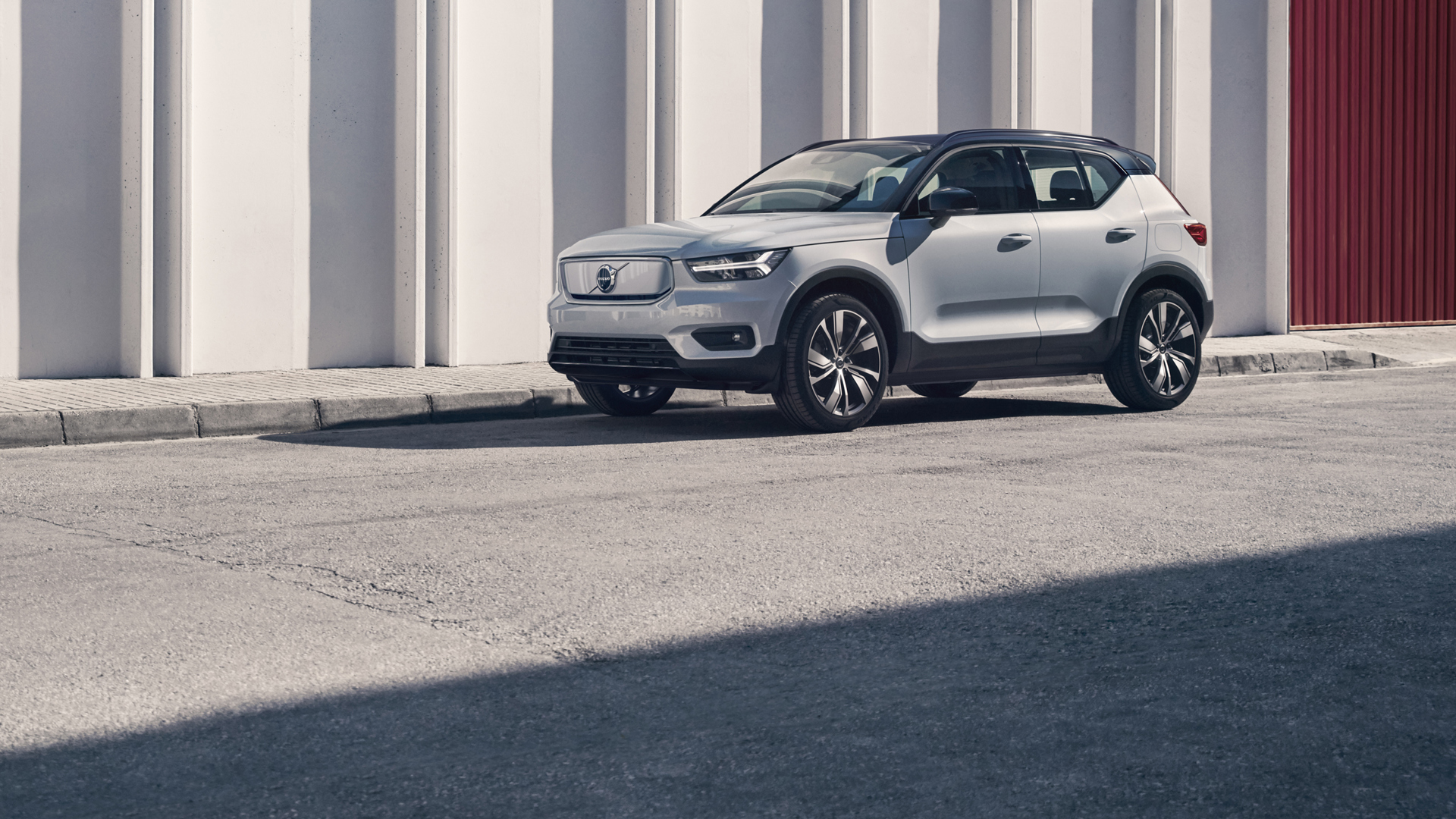Over the past 10 years, the number of electric vehicle options has slowly grown larger. What started out as a science experiment for some automakers and a pet project for early adopters is now a thriving industry gaining popularity every day. Now, the EV market is reaching a tipping point. More and more automakers are entering the market with their own plug-in cars — some are established brands, while others are new startups hoping to shake things up. 2020 is set to see what might be the biggest bounty of new EVs yet, a trend set to continue over the next several years. Suddenly, it's not all that easy to keep track of what EVs are arriving soon and which ones might be a lot further out. In alphabetical order, here's a list of every new EV we expect to launch in 2020.
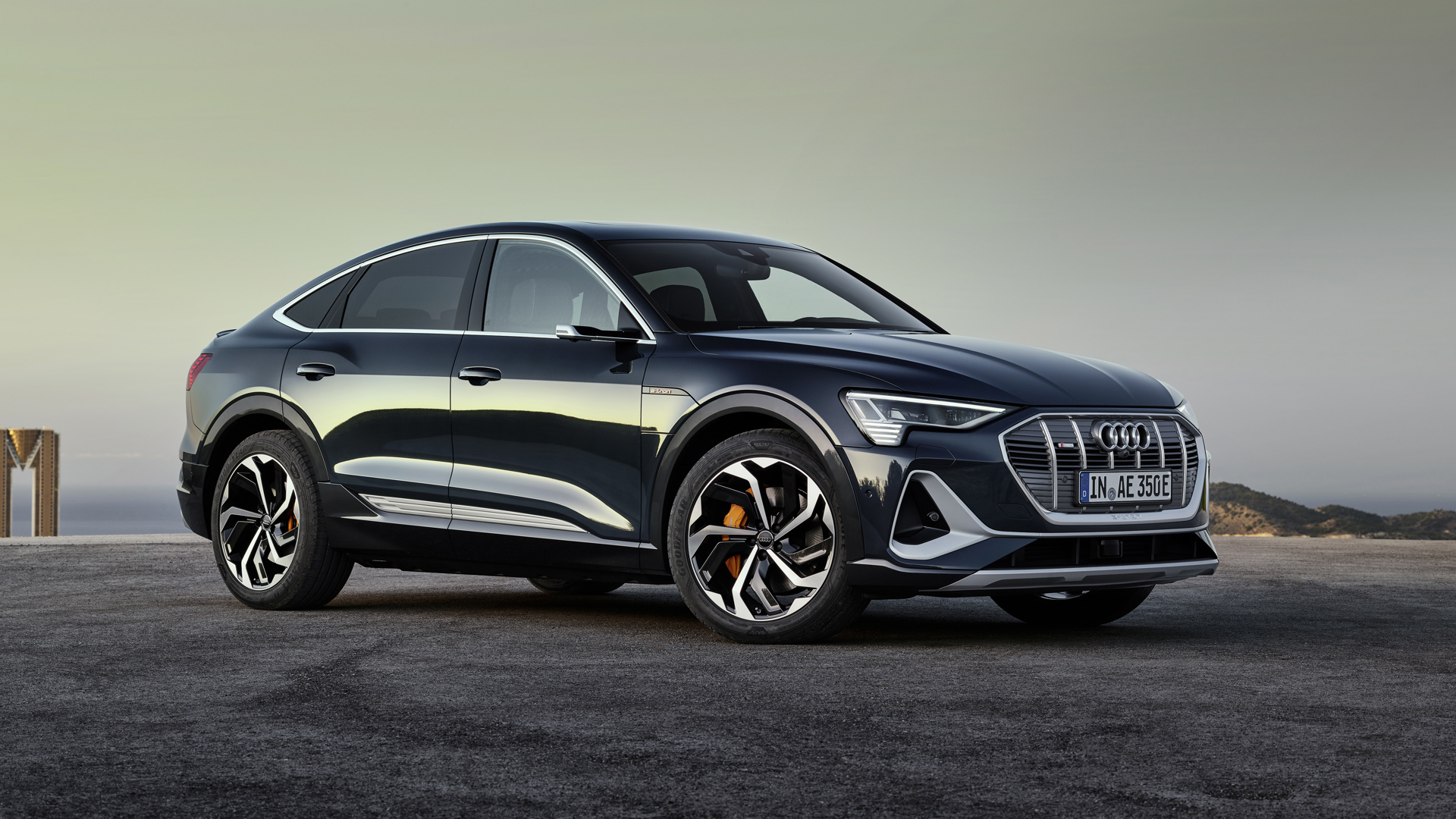
Audi E-Tron Sportback
Audi's E-tron EV family is expanding with the E-Tron Sportback 55. This is the crossover-coupe version of the E-Tron CUV, trading some rear cargo space for a sleeker appearance. However, it's also slightly more aerodynamic than the more upright model.
The E-Tron Sportback will come with a 95 kWh battery pack, expected to allow an estimated range of 356 km. The twin electric motors give it all-wheel drive and will offer 402 hp and 490 lb-ft of torque. The E-Tron Sportback is expected to arrive in Canada in the second half of this year, and a shorter range, lower-horsepower model badged the Sportback 50 is expected to arrive sometime after that.
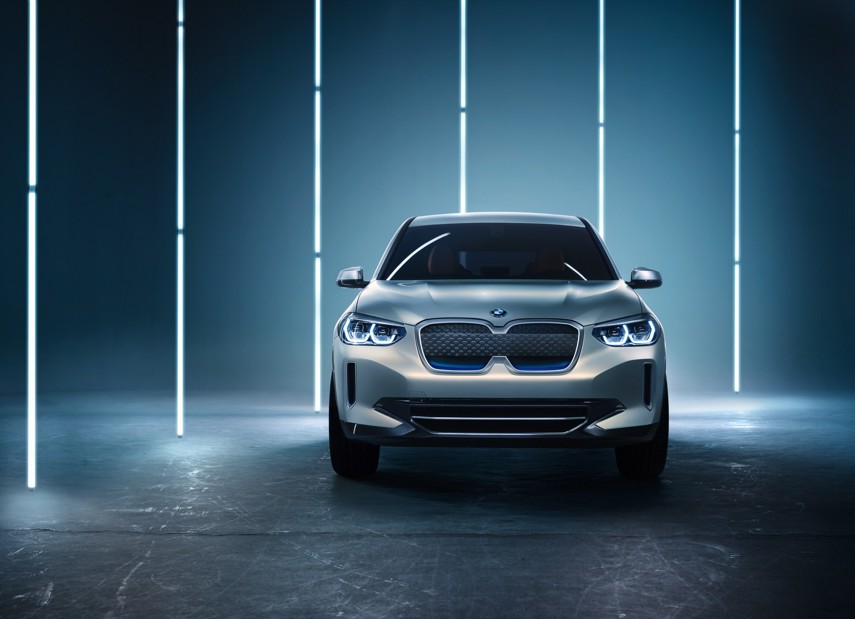
BMW iX3
BMW's first fully electric crossover will be the iX3, set to start production later this year. The iX3 will start with a new version of BMW's electric driveline, offering a 74 kWh battery pack and an anticipated 442 km estimated range on the optimistic WLTP cycle. It will offer 286 hp and 295 lb-ft of torque from a single rear-mounted motor. A dual-motor AWD version is expected to follow. The iX3 will be unique in not using any rare earth metals in the motor, and BMW will purchase the cobalt and lithium for the batteries itself, helping ensure an ethical supply of the metals.
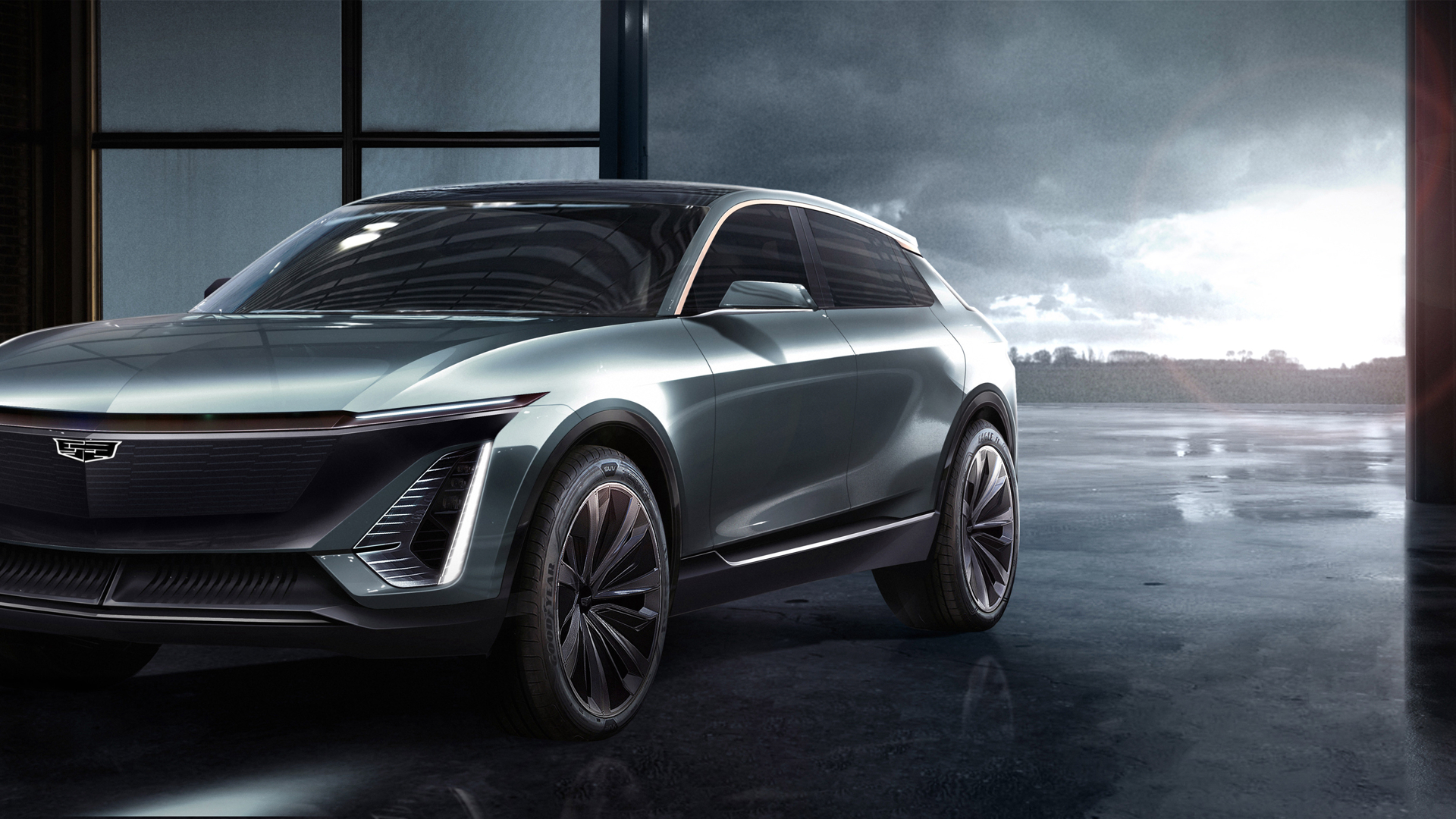
Cadillac EV
Cadillac is expected to have the first of GM's newest generation of electric vehicles. The as-yet-unnamed EV is set to be fully revealed closer to the launch, which we're expecting early this year. This means production may happen in 2020, but there's also a chance it won't begin until 2021. So call this one a "maybe" for this year. GM has said Cadillac will lead GM's electrification charge, so expect it in the near future.
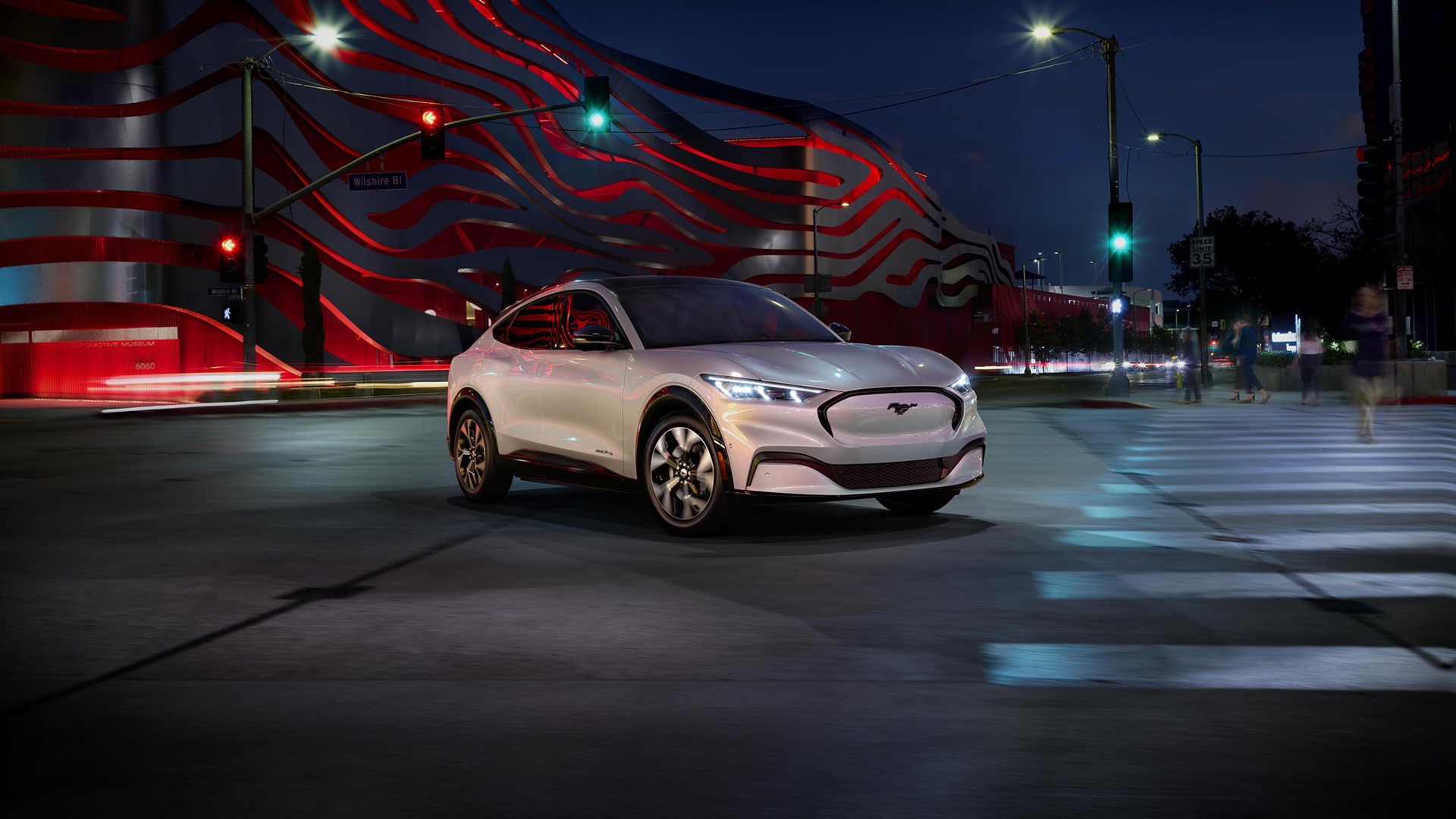
Ford Mustang Mach-E
The Mach-E is one of the most controversial EVs of the year, and it's all in the name. Not just because it's electric, but because it's a crossover that gets the iconic Mustang badge. So what's going to arrive at dealers by the end of the year? The Mach-E gets a choice of rear or all-wheel drive dual-motor configurations and regular and long-range battery packs. The RWD SR model is estimated to have a range of 355 km with the AWD option at 325 km. The Extended Range RWD has a range estimate as high as 475 km, with 425 km for the ER AWD. The slowest can hit 100 km/h in the low six-seconds with the GT performance model, not expected until early next year, adding more horsepower and getting that time down into the threes. Ford is also touting its FordPass charging network as being the largest around, because instead of building its own stations, Ford has created an app that will work with multiple existing networks instead of the "one app, one network" situation that exists now.
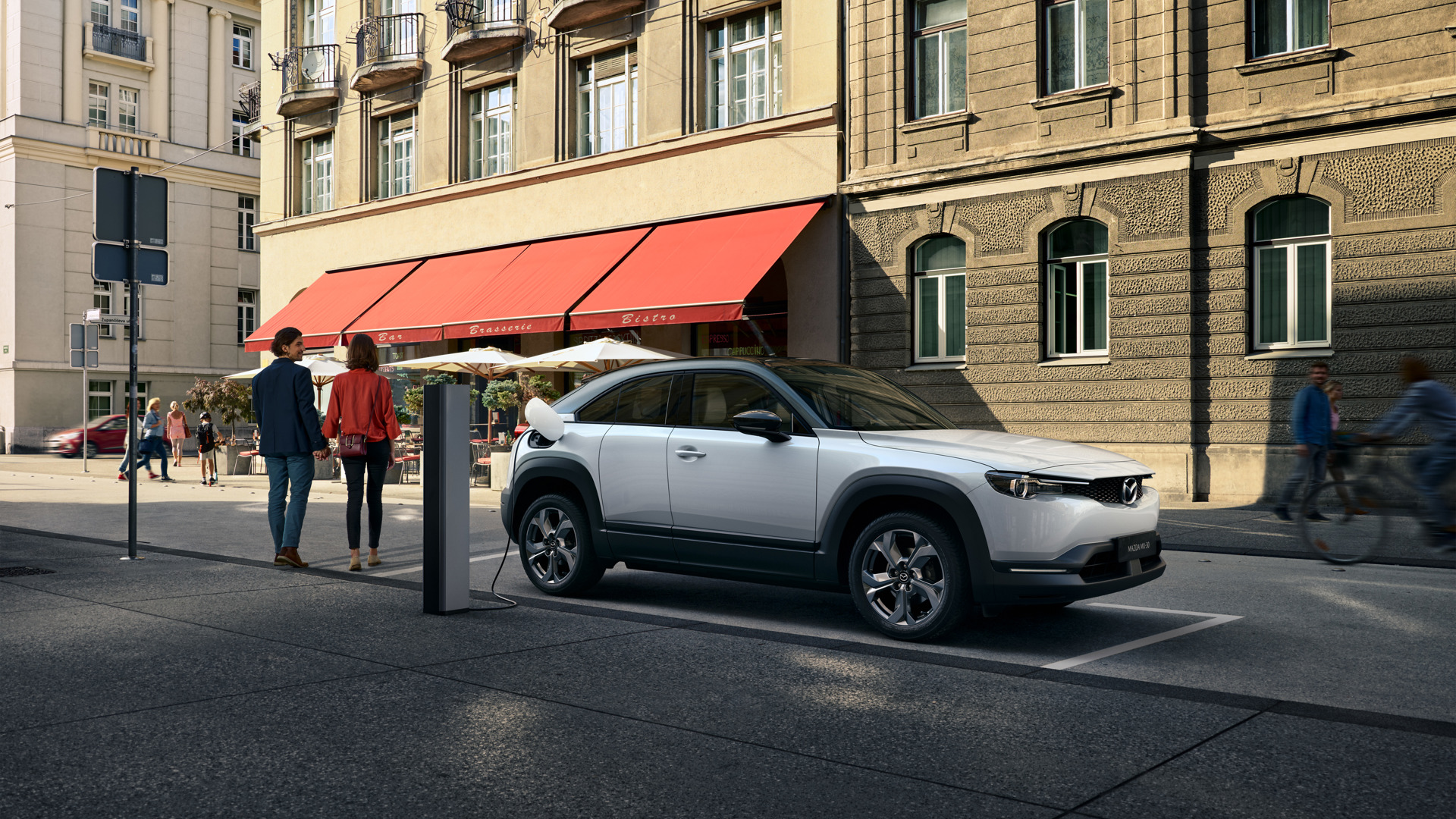
Mazda MX-30
Mazda looked to be running behind on the EV game, but then surprised us with the MX-30. The little EV crossover elevates Mazda's current styling language but also borrows some cues from the rotary-powered RX-8 sports car, like the reverse-hinged rear doors. Innovative interior materials like cork, as well as recycled fibres, will be available. A 35.5 kWh battery will allow for an expected range of around 200 km, measured by European standards. The motor will deliver 143 hp and drives the front wheels. If that's not enough range, a model with a range-extending gas engine is expected. The MX-30 hasn't yet been confirmed for Canada, the brand has said they want to bring it here, so we expect it by the end of the year.
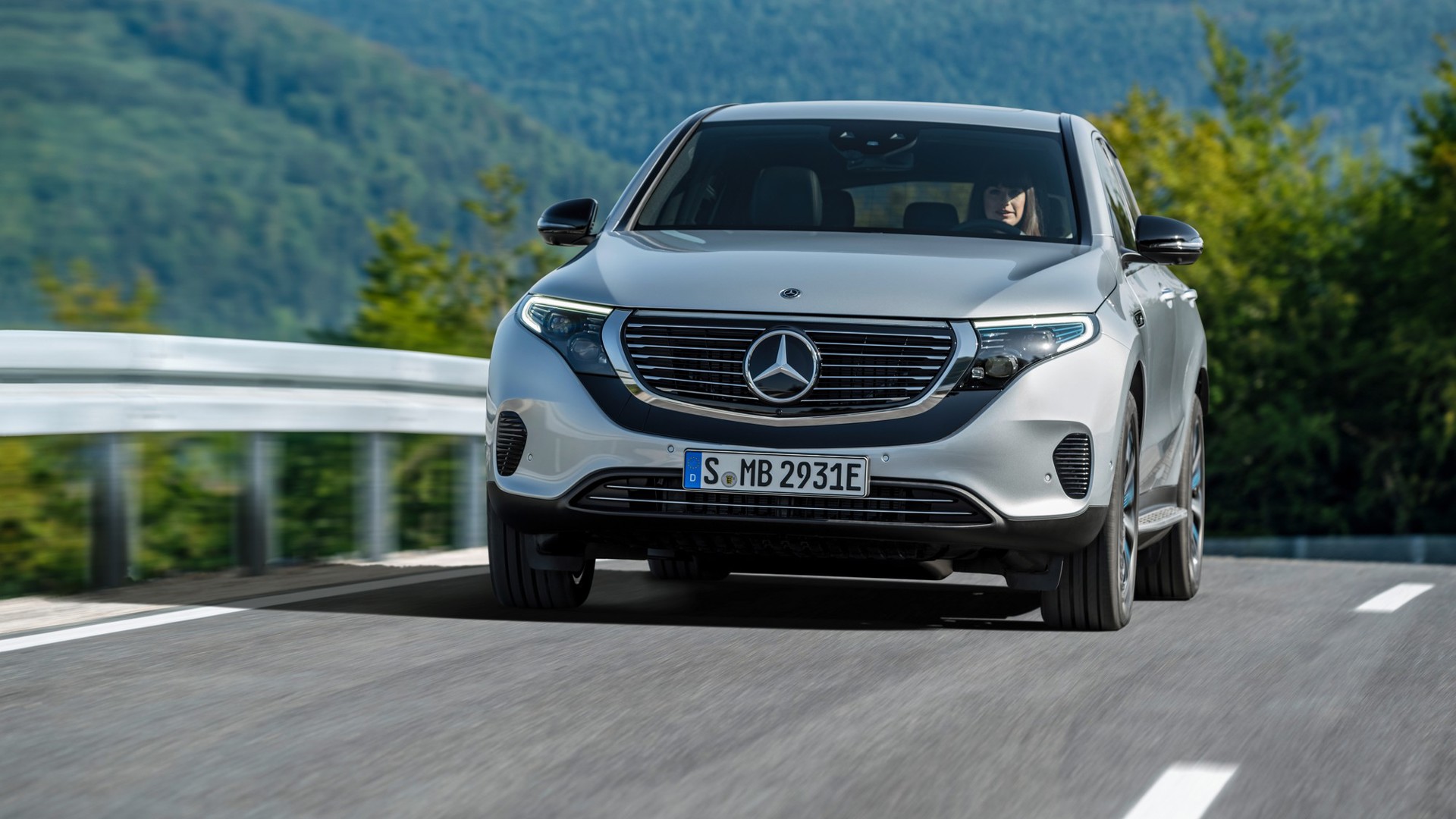
Mercedes-Benz EQC
The EQC looks like a version of the GLC crossover from the future. And largely because its electric driveline, it is. The EQC is set to go on sale early this year with 402 hp and 564 lb-ft of torque from its electric motors. There's no Canadian range estimate yet, but the NEDC cycle, a more optimistic European test, estimates 450 km. Mercedes-Benz will launch the EQC with a special 1886 edition, a nod to the year Karl Benz debuted what is generally considered to be the world's first car.
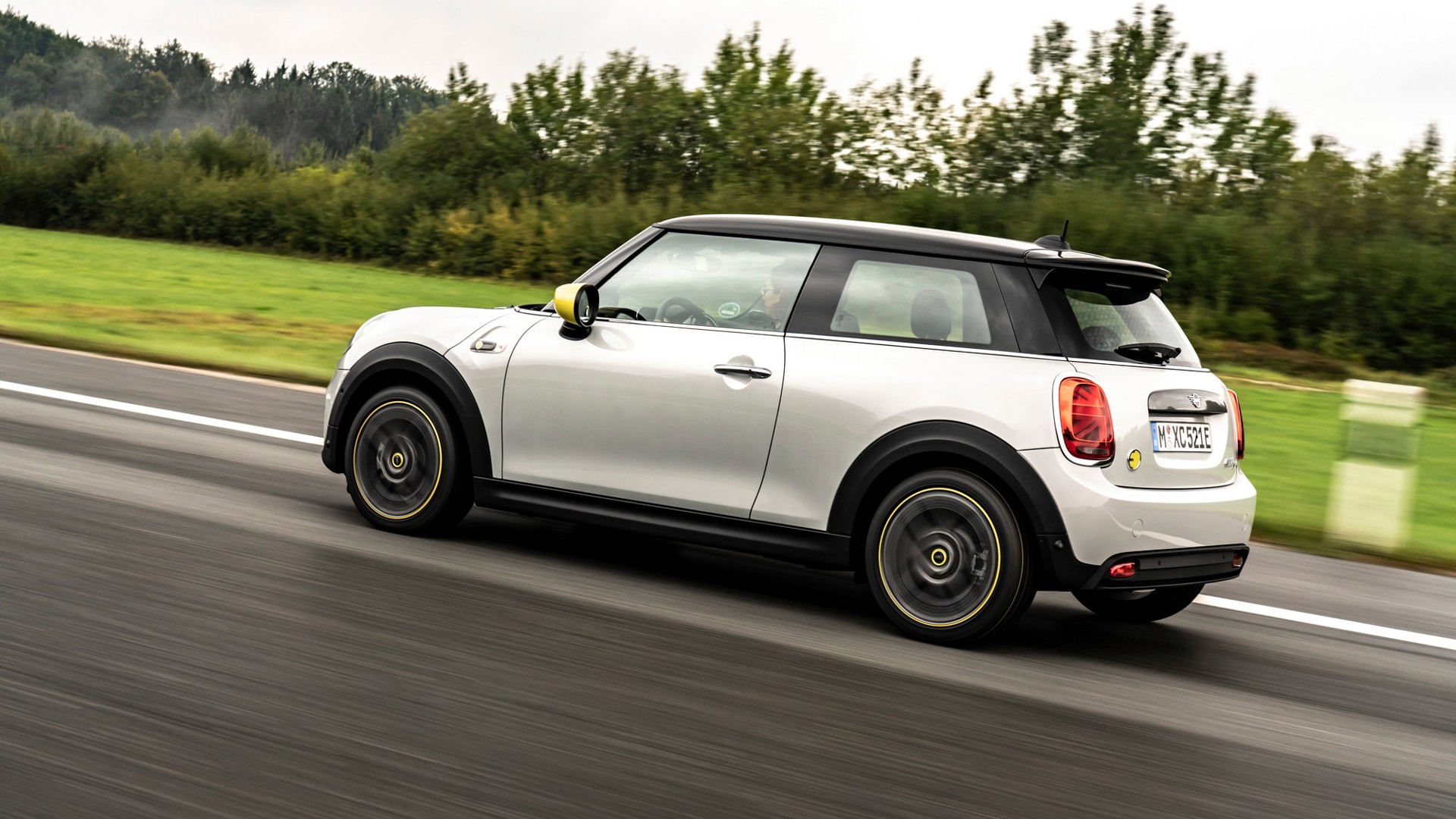
Mini Cooper SE
The all-electric Mini Cooper SE will be the first full EV from Mini. It will come as the three-door version of the car, powered by a 184-hp electric motor. The battery pack is on the smaller side at 32.6 kWh, meaning an expected range estimate of 177 km. The Cooper SE is expected to start under $40,000 when it arrives on sale early this year, offering Mini's quirky style and handling with an electric vehicle driving experience.
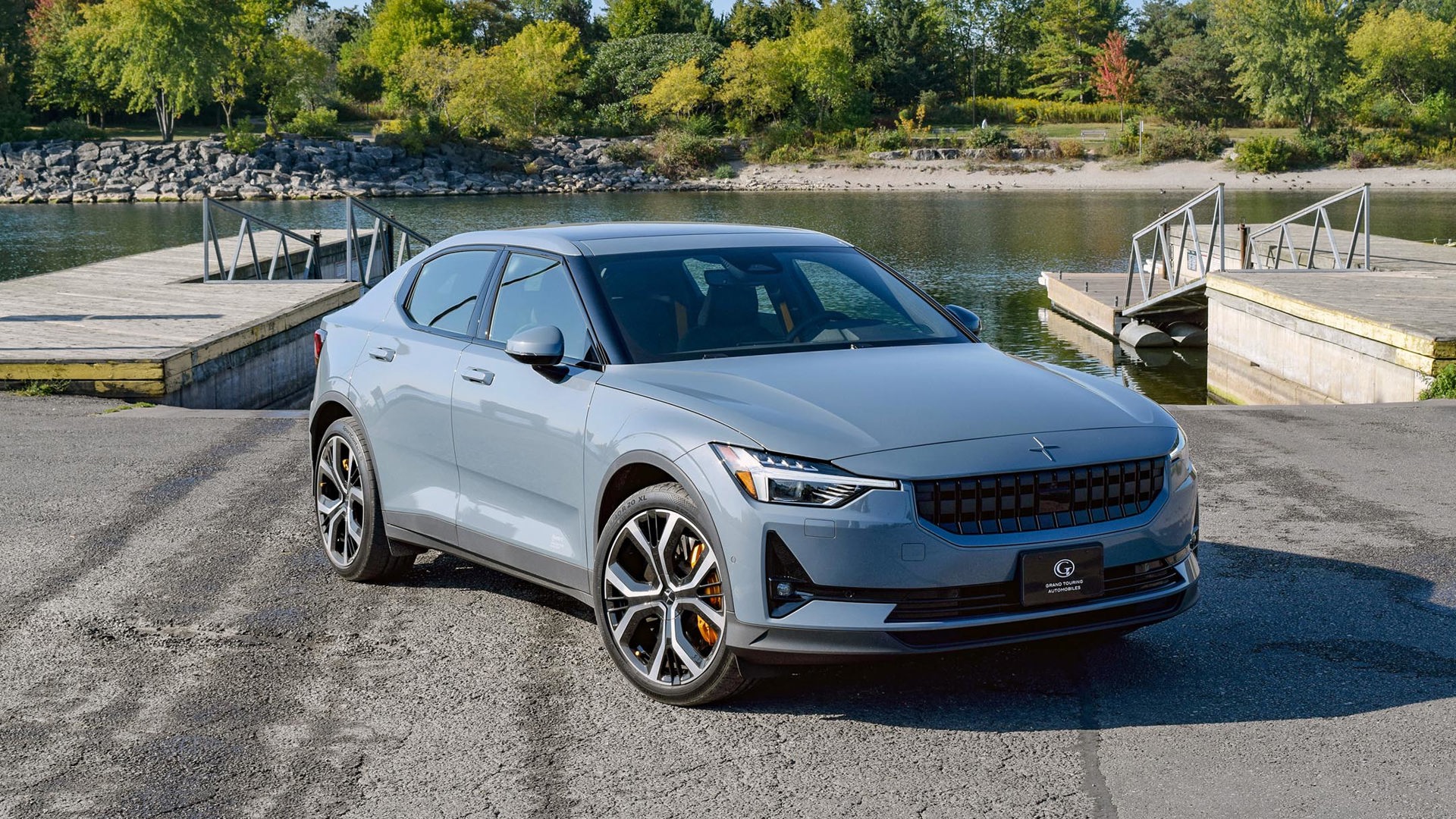
Polestar 2
This EV, called the Polestar 2, will be the second model for Polestar, which started as Volvo's factory racing team but is now a semi-independent brand. While the Polestar 1 was a plug-in hybrid, the 2 is fully electric sports sedan aimed firmly at cars like Tesla's Model 3.
Fitted to the Polestar 2 will be a 78 kWh battery pack the automaker estimates will offer a 440 km range between charges. Acceleration is provided by a pair of electric motors making 408 hp and 487 lb-ft of torque. Polestar will have performance options like 20-inch tires, Brembo brakes, and upgraded dampers available. The Polestar 2 will have a vegan interior with new textile fabrics. It will also have an Android-based infotainment system that allows Phone-as-Key, Google Assistant and other Google apps. This one is available to order now with production expected to start early this year.
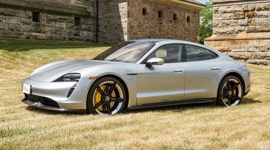
Porsche Taycan
Porsche's first fully electric model, the Taycan, should be arriving at dealers right now. It's not the first EV, but it's the first mainstream model that's being pitched as being racetrack ready, and hsving experienced it on the track, it did not disappoint.
Typically for Porsche, the Taycan will come in a dizzying array of variants. Currently, Porsche has revealed three. The Taycan 4S, Taycan Turbo, and Taycan Turbo S. The 4S is the entry-level model, starting with a 79.2 kWh battery back and overboost power of 522 hp. That's good for an estimated 311 km of range, with an optional larger pack boosting power to 562 hp and giving a slight range increase. The Turbo offers a maximum 670 hp with an estimated 326 km of range and the Turbo S gets 750 hp with 311 km. Expect more variants to follow. Porsche has fitted the Taycan with a new digital dash and it can even be had with an infotainment screen for the front passenger letting them control climate, nav, and audio settings.
A wagon version of the Taycan, the Taycan Sport Turismo, is also expected, though likely not before next year.
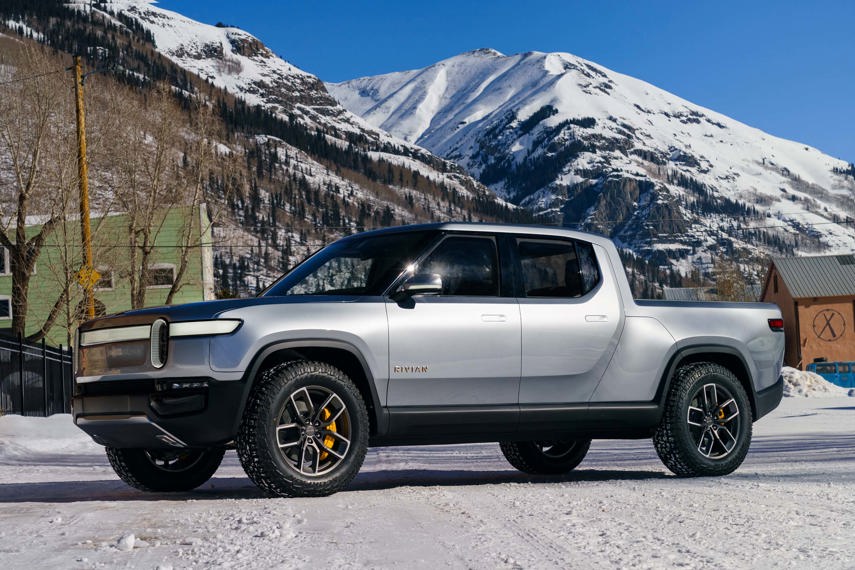

Rivian R1T
Startup electric automaker Rivian is expected to launch the R1T pickup this year. Rivian will offer a large range of motor and battery combinations for the truck, but the top-spec version is expected to get a massive 180 kWh battery with an estimated range of 650 km. The battery will power four independent electric motors giving it a combined 800 hp. fitting for a pickup, the R1T will be able to tow, up to 11,000 lbs. You may not have heard of the company yet, but they do have a factory up and running, as well as a partnership with Ford.
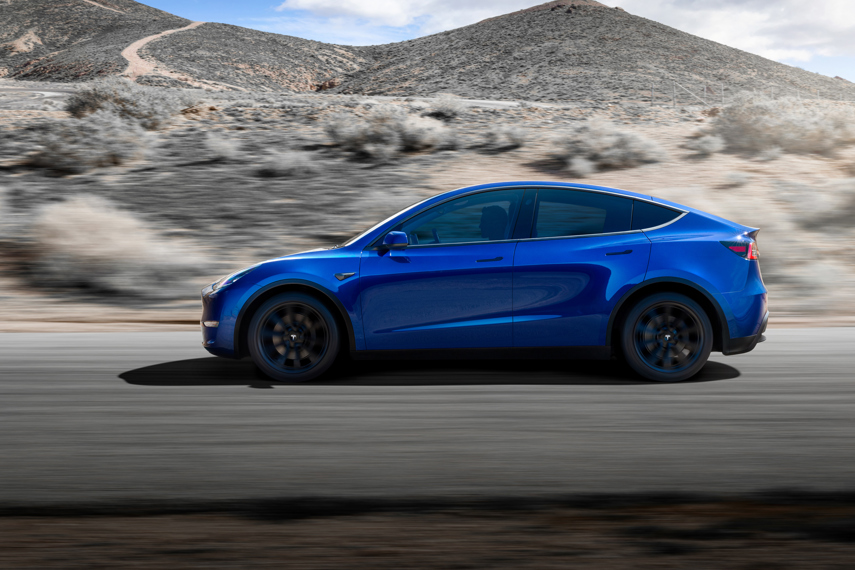
Tesla Model Y
Tesla's Model Y, the company's first compact crossover, was first revealed early last year. It's expected to start production by the end of 2020, though high volumes of pre-orders mean that the CUV might be hard to get before 2021.
Three versions will be available to start, a Long Range RWD model, Long Range AWD model, and the Performance. The Performance is the quickest one, offering an expected 451 km of range and 0-100 km/h in 3.7 seconds. The Long Range AWD offers similar range but a more leisurely 5.1 seconds to 100. Finally, the Long Range RWD model has a 483 km range and 5.8-seconds to 100. Despite the compact size, based on the Model 3 sedan, Tesla says that this crossover will be a seven-seater with the optional third row. It will also have Tesla's Autopilot semi-autonomous driving system.
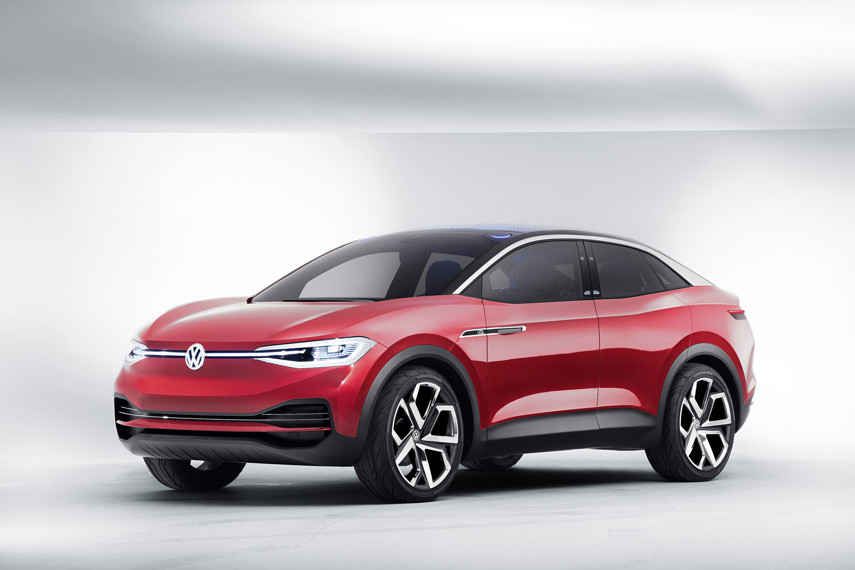
Volkswagen ID.4
The first model from Volkswagen's ID family of electric vehicles expected in Canada is the ID Crozz, or as we expect it to be known in production, the ID.4. We don't know much yet about the vehicle since we've only seen a concept so far, but it will be a replacement for the e-Golf. Expect it to get more range and power, however. We'll see the production version of the ID.4 debut this year, but it may not actually hit the road until 2021.
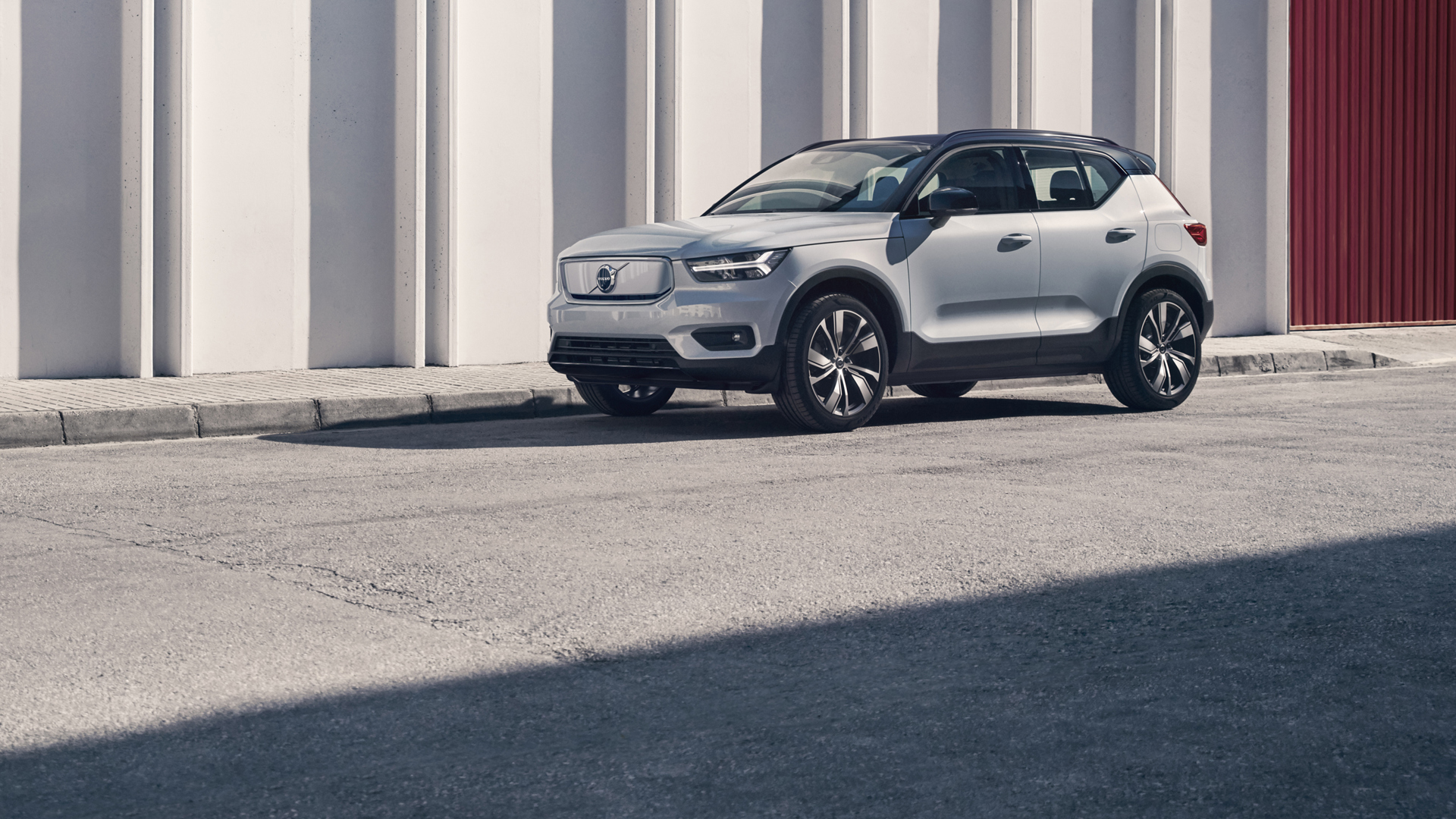
Volvo XC40 Recharge
Volvo's first fully electric vehicle isn't built on an all-new platform. Instead, it's based on the XC40 compact crossover, though that's no bad place to start. Using two motors to provide all-wheel drive, the XC40 Recharge delivers 400 hp, with a 78 kWh battery providing an estimated range of up to 320 km. It will accept fast charging at up to 150 kW, allowing it to go from 10 percent to 80 percent in around 40 minutes. Volvo has given the XC40 Recharge a new Android-based infotainment system that adds Google Assistant, Google Maps, and the Google Play Store, and will also allow for over the air updates and diagnostics.
Production of the XC40 Recharge is expected to start the first half of this year, with the vehicles hitting dealers here closer to the end of the year.
